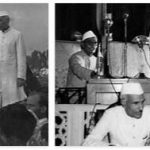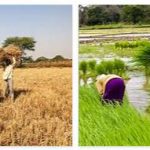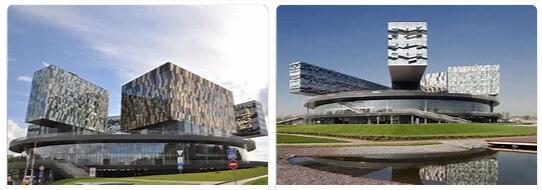Geography
The territory of India looks like an isosceles triangle. At its base lie the Himalayan mountains, and one of the faces protrudes into the Indian Ocean at a distance of 1,600 km. The total area of India is over 3,287 thousand km². The land border of the country stretches for 15.2 thousand km, and the sea border is about 6 thousand km. See India abbreviations.
In the north-western part of India borders with Pakistan, in the east – with Bangladesh and Myanmar, in the north lies the border with Nepal, China and Bhutan. Off the northern coast of the country is the island of Sri Lanka. India ranks seventh in terms of area in the world.
There are seven natural regions in India:
- The Himalayas and the Karakorum form the Northern Mountain Range;
- Southern plateau;
- Indo-Gangetic plain;
- Great Indian Desert;
- West Coast;
- East Coast;
- Nicobar, Andaman and Lakshadweep Islands.
The mountain landscape of India includes: Himalayas, Eastern Highlands (Patkan), Vindhya, Aravali, Satpura, Eastern and Western Ghats.
Climate
According to 800zipcodes, India is influenced by a tropical monsoonal climate. The seasons are conventionally divided into three seasons: April-June, July-September and October-March.
Weather conditions in India directly depend on the relief features of the country. For example, in June, states near mountain ranges experience torrential rains. By the end of September, the showers stop, and clear, dry weather sets in.
The choice of month for traveling in India depends on the terrain of the region you are planning to visit. For example, the beach season in Goa opens in November, in the Himalayas at this time there is already snow. It is recommended to travel to Central and South India between July and September. These days the weather is warm, sometimes it rains, the air warms up to a temperature of +25…+30 °C. From October to March it is cooler, the temperature fluctuates between +20…+25 °C. In March-June the weather is hot and dry (+35…+45 °C).
Beach resorts in India – Goa, Mumbai, Kerala, Andaman and Nicobar Islands
Ski resort – Himalayas
Health resorts – Kerala, Goa, Shimla, Delhi and Arga.
Indian Cuisine
The main feature of Indian cuisine is the abundant use of spices and spices in the manufacture of various dishes.
More than 25 types of different spices are used to prepare Indian cuisine, each of which has certain healing properties. Different regions of India use their own spices and their combinations.
One commonly used condiment is curry. Translated from Indian, curry sounds like ” sauce ” and is a thin mixture of crushed turmeric, ginger, cardamom, poppy seeds, nutmeg and coriander.
Meat dishes are popular in the northern parts of India. Among them: rogan-josh (mutton curry), biryani (lamb or chicken stewed with rice and orange sauce), gushtaba (spicy meatballs in yogurt). All dishes of northern cuisine are distinguished by their bright and rich taste, they are generously seasoned with spices and sprinkled with saffron or walnuts. North Indian specialties are kebabs and tandoori (fish, meat and chicken marinated with herbs and baked in a clay oven).
In the south, most dishes are made from vegetables with lots of hot spices. Main dishes:
- Bhujia (curry vegetables);
- Idli;
- Dosa;
- Samba (rice cakes, lentils with curry, dumplings stuffed with marinade);
- Raita (yogurt flavored with mint and grated cucumber).
The west coast of India is famous for its fish and seafood dishes. Bombay duck curried (fried bombila fish), dahi maach (curry fish with yogurt and ginger), licorice fish (salmon) and mailai (curry shrimp flavored with coconut) are just some of the local dishes.
Rice is treated differently in India. If in the south it is part of most dishes, then in the north it is often replaced with unleavened cakes – chappati, puri, nan, etc. Among the traditional dishes of India, there are also dhal (a soup of legumes and vegetables) and dhai (yogurt or curdled milk, which is served along with curry).
Of the sweets in India, milk puddings, pancakes and cookies are popular.
Main dessert dishes:
- rasgulla (cottage cheese balls flavored with rose water),
- kulfi (local ice cream),
- jalebi (fritters in syrup),
- gulab-jamun (a mixture of flour, yogurt and grated almonds).
In addition to sweets in India, you will be offered mangoes, apples, apricots, strawberries and even melons.
It is customary to finish the meal by chewing pan, which improves digestion. Pan is a spiced crushed betel nut wrapped in betel leaves.
Important: In India, it is customary to eat with the fingers of the right hand.










